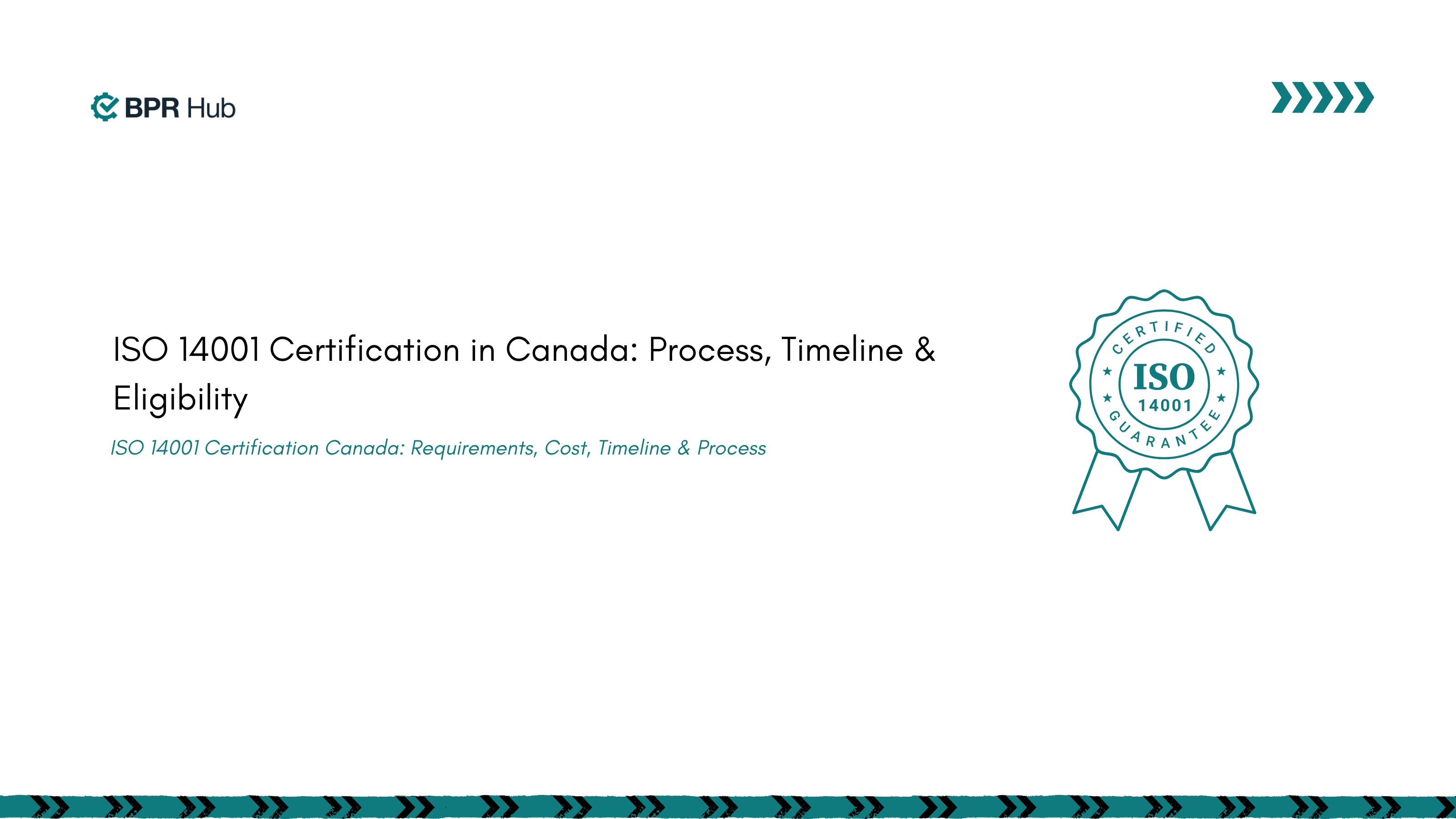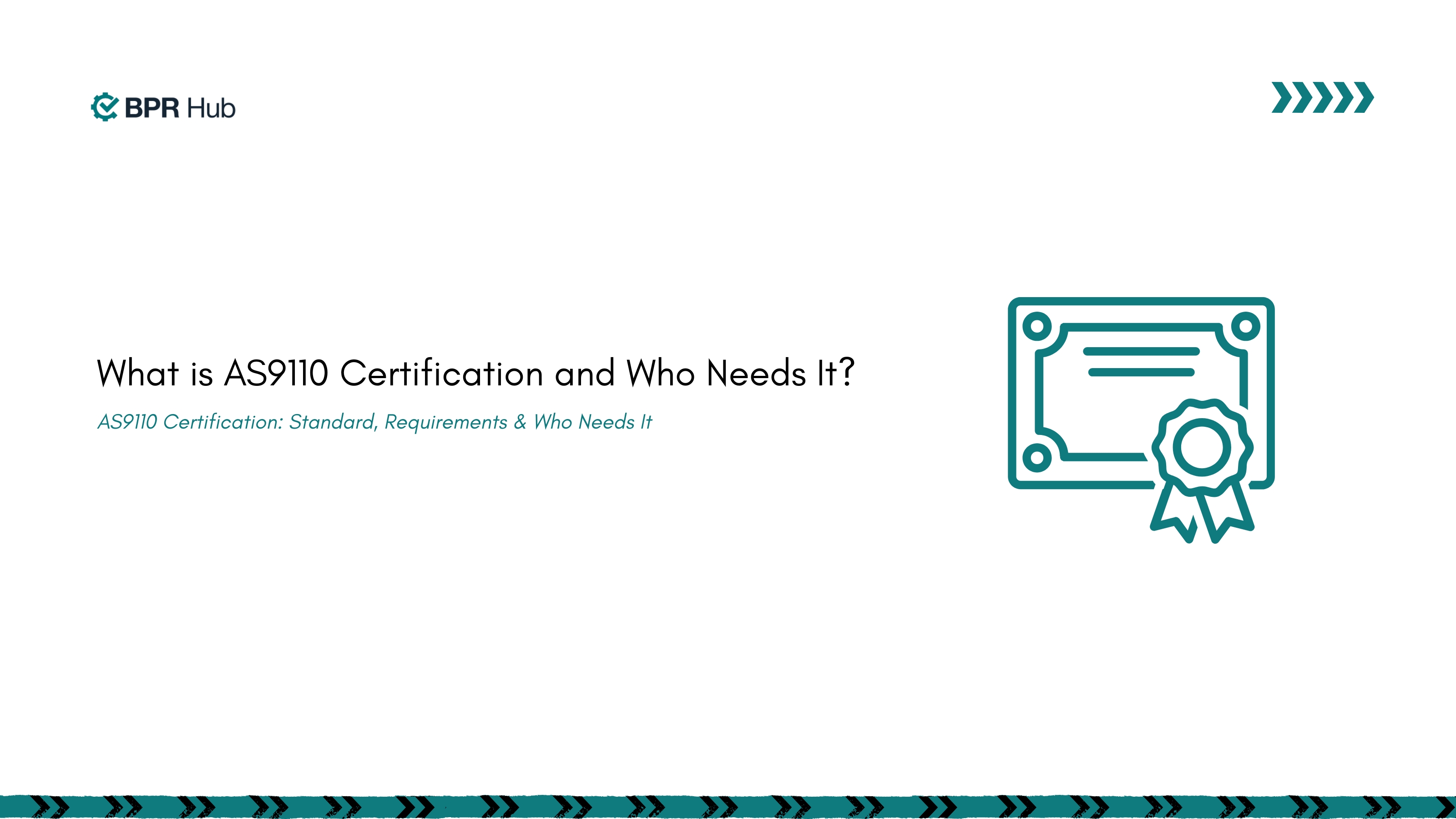A single quality failure in today’s manufacturing landscape can trigger recalls, regulatory sanctions, or customer loss. As global supply chains grow more complex, quality management systems have become strategic imperatives. The management system certification market, including ISO 900,1 is set to grow from USD 40 billion in 2024 to USD 49.5 billion by 2029, driven by organizations’ need to prove quality excellence and build customer trust.
ISO 9001 is the world’s leading quality management standard, enabling consistent product delivery and operational efficiency. In Europe, over 30% of global ISO certification revenue comes from strict ISO 9001 regulations. Certified companies report 15–20% cost savings through better processes and reduced defects, while gaining an edge with customers who require certified suppliers.
In this blog, we’ll explore what ISO 9001 certification entails, the necessary criteria for it, and how BPR hub helps a Whether you’re aiming to improve customer satisfaction, streamline processes, or simply comply with the latest requirements for iso 9001 certification, this guide will help you navigate the path to successful certification and unlock the full potential of your QMS.
What is ISO 9001 Certification?
ISO 9001 Certification is an internationally recognized standard that specifies requirements for a Quality Management System (QMS). It helps organizations ensure they consistently meet customer and regulatory requirements, enhancing overall performance and customer satisfaction.
The ISO 9001 certification process emphasizes a process-oriented approach, enabling businesses to identify inefficiencies, ensure compliance, and foster a culture of quality. Ultimately, ISO 9001 certification signifies an organization’s dedication to maintaining high standards of quality management. With the growing emphasis on the standard, the requirement also gets upgraded.
So, what are the requirements for ISO 9001 certification? To obtain ISO 9001 certification, organizations must establish and maintain a QMS, document procedures and policies, conduct regular internal audits, and perform management reviews. They must also demonstrate a commitment to continual improvement and ensure a strong focus on customer needs. To achieve certification, the organization's QMS must meet the criteria for ISO 9001 certification. The ten clauses provided in ISO 9001:2015 elaborate on these criteria. Let’s analyze them in depth.
What Are the Requirements You Need to Meet for ISO 9001 Certification?
The criteria for ISO 9001 certification are outlined within the standard's framework and broadly separated into ten clauses. This requirement ensures that your processes align with internationally recognized standards for efficiency, consistency, and customer satisfaction.
Understanding your organization's context is key to establishing strong leadership, risk management, and continual improvement practices. Achieving ISO 9001 certification means an organization's QMS meets the ISO 9001:2015 criteria. Let’s study the clauses in detail.
1. ISO 9001 clauses 0 to 3
Even though these clauses are not mandatory for implementation, they offer foundational insights and lay the groundwork for the rest of the standard.
- Clause 0: Clause 0 of the ISO 9001 Standard provides an essential overview, outlining its purpose and the benefits of implementing a Quality Management System (QMS). It introduces key concepts such as the process approach, the Plan-Do-Check-Act (PDCA) cycle, and risk-based thinking, which are crucial for understanding the standard's structure and flow.
- Clause 1: This clause defines the scope of the ISO 9001 Standard, outlining its broad applicability to organizations of all sizes, types, and industries.
- Clause 2: This section identifies normative references, which are external documents ISO 9001 relies on for additional guidance. The essential reference is ISO 9001:2015, which defines the fundamental concepts and vocabulary of quality management.
- Clause 3: This clause specifies the terms and definitions from ISO 9001:2015 to ensure clarity and consistency.
2. Clause 4: Context of the Organization
Clause 4 of the ISO 9001:2015 Standard focuses on defining your organization’s purpose and strategic direction in relation to quality. It incorporates the following points:
- It requires identifying internal and external factors that impact the quality of your services. External factors may include the environment and market, and internal factors include culture, processes, and resources.
- It requires understanding the needs of stakeholders such as employees, suppliers, and customers.
- It emphasizes that organizations do not operate in isolation and that they must consider customer expectations and regulatory requirements.
- Outlines the need to define the scope and map out processes that contribute to meeting your QMS.
3. Clause 5: Leadership
It outlines the critical role leadership plays in providing the necessary support and resources for its implementation, ensuring the QMS aligns with the business's strategic direction. Through clause 5, senior managers take responsibility for:
- To develop a quality policy that provides direction.
- Communicate the quality policy and objectives to define roles within the QMS and clarify decision-making processes clearly.
- To promote a culture of continuous improvement
- To encourage employee engagement in the QMS.
- To oversee annual reviews and maintain alignment with business goals
By now, you would have understood the complexity of reviewing and monitoring your compliance process. The manufacturing industry is often required to follow multiple standards at a time; imagine the difficulty.
Eliminate manual compliance headaches and stay audit-ready year-round. See how BPR Hub streamlines ISO 9001 certification for your team.
📍 Book a Demo
📧 hello@bprhub.com
4. Clause 6: Planning
This clause focuses on the need for organizations to develop plans that address risks and opportunities, ensuring the QMS remains effective and aligned with business objectives. Factors to consider while creating a plan
- Identifying risks and opportunities based on the internal and external factors highlighted in Clause 4
- Document these potential risks with the probability of their occurrence
- Proactively developing strategies to mitigate risks and capitalize on opportunities
- Manage changes to the QMS with the availability of resources and the responsibilities involved.
5. Clause 7: Support
Change management can be simple; most businesses already engage in informal planning when introducing changes, such as purchasing new equipment or implementing new processes.
It focuses on ensuring that an organization provides the necessary resources to support an effective QMS that consists of robust infrastructure, efficient working environments, and HR Management.
The resources are categorized into three main areas:
- People – Organizations must ensure that employees have the required education, training, and experience to perform their responsibilities effectively.
- Infrastructure – Adequate infrastructure, including buildings, equipment, and technology, must be provided and maintained to support business operations and ensure safety and functionality.
- Environment – The working environment must consider both human and physical factors such as equality, diversity, inclusion, working conditions, and shift patterns to support employee well-being and productivity.
Additional resource requirements are:
- All monitoring and measuring equipment is calibrated correctly, maintained, and fit for purpose.
- Required information and documentation must be maintained and accessible to those who need it.
- Effective communication channels to ensure clear internal and external information flow.
- Proper documentation to reduce errors
BPRHub’s Documentation Hub feature simplifies the management of essential compliance documents, such as SOPs, quality manuals, and audit reports, which is crucial for manufacturing companies.
6. Clause 8: Operational Planning and Control
It is the core of operational processes, detailing the steps an organization must take to produce and deliver its products or services effectively. This clause translates quality management principles into actionable processes, ensuring that customer requirements are consistently met.
The operational requirements include several activities:
- Establishing how to communicate with customers and determine their needs
- Verifying that products and services meet customer expectations
- Designing and developing products or services
- Managing externally provided processes, products, and services
- Ensuring proper delivery and completion of products or services
- Monitoring and measuring activities to ensure effectiveness
- Managing post-delivery activities
- Controlling nonconforming outputs
It addresses planning, product design, purchasing, and the actual production or provision of services, followed by supply and delivery. Additionally, this is the only clause where specific requirements, such as design, can be excluded if they are not relevant to the organization’s operations.
7. Clause 9: Performance Evaluation
Clause 9 of ISO 9001 standard focuses on performance evaluation, requiring businesses to monitor, measure, and analyze their processes to assess the effectiveness of their QMS and identify areas for improvement.
According to clause 9, organizations must establish processes to evaluate customer satisfaction and measure the performance of suppliers and external parties involved in providing products or services. It also consists of:
- Internal audits of the QMS to ensure that processes align with organizational objectives and ISO 9001 requirements.
- Management reviews where leadership evaluates the performance of the QMS to determine its suitability, adequacy, and effectiveness.
- Support ongoing improvements in quality management.
- Performance is continuously evaluated and enhanced across the organization.
Conducting audits is the best way to evaluate your company’s performance. Audit Hub by BPRHub can significantly enhance your audit efficiency by centralizing audit management to simplify the scheduling, tracking, and execution of audits.
8. Clause 10: Continuous Improvement
This clause, marking the final section of the standard's requirements, prioritizes improving the quality management system (QMS) through corrective actions and continuous improvement. It emphasizes the importance of ongoing enhancement within an organization.
To achieve continual improvement, organizations must implement measures to:
- Enhance products and services to benefit the business
- Align more closely with customer needs, thereby improving customer satisfaction
- Identify and rectify instances where processes fail to meet their objectives
Clause 10 also outlines requirements for ISO 9001 certification managing non-conformities, which include
- Taking actions to control the non-conformity
- Evaluating the need for corrective actions to eliminate the underlying causes
- Implementing corrective actions
- Reviewing the effectiveness of those actions
- Updating the risk register as needed
- Making adjustments to the QMS if required
Organizational leaders are tasked with identifying opportunities for improvement and implementing necessary actions to meet customer expectations and elevate satisfaction.
How BPRHub Helps You Get ISO 9001 Certified With Ease
ISO 9001 certification requires a dedicated QMS, continuous monitoring, thorough documentation, and regular auditing. Without automation and real-time compliance, these tasks can become tedious. BPRHub simplifies the compliance process by enhancing precision, ensuring your business operation meets the ISO 9001 requirements.
From real-time compliance checks that keep your information current to process-ready templates that guide you through certification steps, BPRHub transforms a complex undertaking into a manageable and structured journey. Automated notifications ensure you stay updated on document changes, helping you effortlessly maintain compliance with the latest regulations.
Achieve ISO 9001 certification faster, automate clause mapping, audit workflows, and documentation with BPR Hub. Book your personalized demo now!
📍 Book a Demo
📧 hello@bprhub.com
FAQ
Q. What are the criteria for ISO 9001 certification?
The criteria for ISO 9001 certification require organizations to establish a comprehensive Quality Management System (QMS) that meets all mandatory requirements outlined in clauses 4-10 of the ISO 9001:2015 standard. Organizations must document policies and procedures, conduct regular internal audits, perform management reviews, address risks and opportunities, and demonstrate commitment to continual improvement while consistently meeting customer and regulatory requirements. The ISO 9001 certification process involves implementing these requirements systematically across all applicable organizational processes and undergoing external certification audits by accredited certification bodies.
Q. What are the key ISO 9001 requirements organizations must meet?
The ISO 9001 key requirements include understanding organizational context (Clause 4), demonstrating leadership commitment (Clause 5), planning for risks and opportunities (Clause 6), providing adequate support and resources (Clause 7), controlling operational processes (Clause 8), evaluating performance through monitoring and internal audits (Clause 9), and implementing continuous improvement (Clause 10). These ISO 9001 standard requirements ensure organizations maintain effective quality management systems that consistently deliver products and services meeting customer expectations and applicable regulatory requirements.
Q. How does BPRHub streamline the ISO 9001 certification process?
BPRHub streamlines the ISO 9001 certification process through automated compliance checks, customizable audit lists, centralized document management, and real-time monitoring capabilities. The platform provides process-ready templates that guide organizations through each certification step, automated notifications for document changes, and comprehensive analytics to track compliance status. This ISO certification guide approach transforms complex requirements for ISO 9001 certification into manageable, structured workflows, making certification simpler, faster, and more efficient while reducing manual effort and potential errors.
Q. What is an ISO 9001 audit checklist?
An ISO 9001 audit checklist is a structured tool used to assess whether your Quality Management System (QMS) complies with ISO 9001:2015 requirements. It includes questions covering clauses like context, leadership, risk management, operational control, and continual improvement. Auditors use it to ensure documented processes match real-world practices.
Q. What are the ISO 9001 auditor requirements?
ISO 9001 auditor requirements mandate that internal auditors must be independent of the audited activities and demonstrate competence in auditing techniques and applicable ISO 9001 standard requirements. Auditors must receive proper training on QMS principles, audit methodologies, and the specific requirements of ISO 9001:2015. They should possess relevant education, experience, and skills to effectively evaluate QMS implementation, identify non-conformities, and provide valuable recommendations for improvement. External certification auditors must be qualified through accredited certification bodies and maintain ongoing professional development.
Q. How does BPRHub ensure compliance with the latest ISO 9001 regulations?
BPRHub ensures compliance with the latest ISO 9001 regulations through automated notifications, real-time document updates, and continuous monitoring of regulatory changes. The platform maintains up-to-date compliance information, automatically alerts users to relevant standard updates, and provides guidance on implementing new requirements. This proactive approach ensures that processes and documentation remain aligned with current ISO certification 9001 requirements, minimizing the risk of non-compliance and helping organizations maintain their certification status effectively.
Q. What are the mandatory documents for ISO 9001:2015?
Mandatory documents for ISO 9001:2015 include the Quality Policy, documented information about QMS scope, procedures for key processes, risk management documentation, internal audit programs and results, management review records, corrective action records, and monitoring and measurement results. Additional requirements for ISO 9001 certification include training records, design and development documentation (where applicable), supplier evaluation records, customer satisfaction data, and calibration records for monitoring equipment. The specific documentation requirements may vary based on organizational size, complexity, and applicable exclusions.
Q. How long does the ISO 9001 certification process typically take?
The ISO 9001 certification process typically takes 6-18 months, depending on organizational size, complexity, and existing QMS maturity. The process includes preparation and gap analysis (1-3 months), documentation development (2-6 months), implementation and training (2-6 months), internal audits (1-2 months), and external certification audits (1-2 months). Organizations with existing quality systems may complete the process faster, while those starting from scratch may require additional time. BPRHub's automated tools and templates can significantly reduce implementation time by streamlining documentation and compliance tracking.
Q. What are the benefits of achieving ISO 9001 certification?
ISO 9001 certification provides numerous benefits, including enhanced customer satisfaction through consistent quality delivery, improved operational efficiency, reduced costs through waste elimination, increased market credibility and competitive advantage, better risk management, and improved employee engagement. Organizations often experience enhanced supplier relationships, streamlined processes, better regulatory compliance, and access to new markets that require ISO certification 9001 requirements. The certification also demonstrates commitment to quality excellence and continuous improvement, building stakeholder confidence and supporting business growth objectives.
Q. What happens if you are not ISO certified?
Without ISO certification, your organisation may face limited market access, reduced credibility, and lost business opportunities, especially where compliance is a client or regulatory requirement. It may also signal weak internal controls, inconsistent quality, and missed chances for process optimisation and risk reduction.
Q. Can organizations exclude certain requirements from ISO 9001:2015?
Organizations can exclude certain ISO 9001 standard requirements only from Clause 8 (Operation) and only when these requirements do not apply to their operations or do not affect their ability to ensure product/service conformity. Common exclusions include design and development requirements for organizations that don't perform design activities. However, exclusions must be justified, documented, and not affect the organization's ability to meet customer and regulatory requirements. All other criteria for ISO 9001 certification in clauses 4-7 and 9-10 are mandatory and cannot be excluded regardless of organizational type or size.
Get insights that help you minimize risks and maximize profits.
Dive deeper into manufacturing compliance with our free resources.
We get it, compliance can get tough.
Here are some additional resources to help.
We get it, compliance can get tough. Here are some additional resources to help.
Get updates in your inbox

.svg)
%20(1).svg)


.jpg)


%20(1).svg)

.avif)

